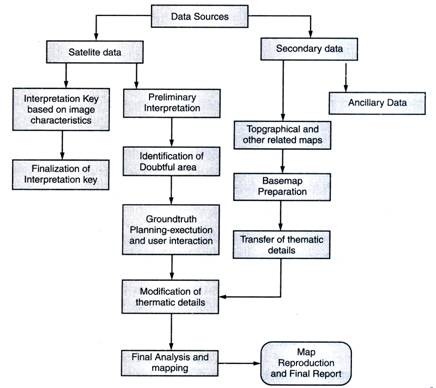wasteland reclamation
Wasteland Reclamation: Classification and Reclamation of Wasteland!
Wastelands are lands which are unproductive, unfit for cultivation, grazing and other economic uses due to rough terrain and eroded soils. The lands which are waterlogged and saline are also termed as wastelands. The loss of fertility followed by erosion also leads to the conversion of marginal forest lands into wastelands.
Land is an important resource since it is put to different uses by man. India has a land area of nearly 32.88Xkm2 which is about 2.4 percent of the world. Loss of vegetation cover leads to loss of soil through erosion, which ultimately creates wastelands.
Wastelands are lands which are unproductive, unfit for cultivation, grazing and other economic uses due to rough terrain and eroded soils. The lands which are waterlogged and saline are also termed as wastelands. The loss of fertility followed by erosion also leads to the conversion of marginal forest lands into wastelands.
In the absence of land management policy, geomorphic processes become active due to which soil layers are eroded and transported, making these lands infertile, stony and useless. This is one of the pressing problems of one country as loss of soil has already ruined large amounts of cultivable lands.
If it remains unchecked it will affect the remaining lands. Hence, conservation of soil, protecting the existing cultivable lands and reclaiming the already depleted wastelands figure predominantly among the priority tasks of planning for the future.
It is reported that every year about 3 million hectares of cropland are ruined by various kinds of erosion. About 4 million hectares are converted into deserts and 8 million hectares are taken away for non-agricultural purposes such as plots for houses, roads, factories and reservoirs. The deforestation leads to soil erosion and the eroded soils exhibit droughty tendency.
Further, the falling trees aggravate the lowering of water table and dry conditions. The loss of fertility followed by erosion also leads to the transformation of marginal forest lands into wastelands.
Classification of Wastelands:
The wastelands are broadly classified into two categories:
1. Barren and uncultivable wastelands:
These lands cannot be brought under cultivation or economic use except at a very high cost, whether they exist as isolated pockets or within cultivated holdings. Such lands are sandy deserts, gully land, stony or leached land, lands on hilly slopes, rocky exposures etc.
2. Cultivable wastelands:
These lands are not cultivated for five years or more. It consists of lands available for cultivation, but not used for cultivation. Next to fallow lands, cultivable wastelands are important for agricultural purposes, because they can be reclaimed through conservational methods for cultivation, grazing or Agroforestry.
Maximum wasteland areas in our country lie in Rajasthan anthropogenic activities leading to wasteland formation are deforestation, overgrazing, mining and intensive agricultural practices.
Reclamation of Wastelands:
The different methods used for the reclamation of wastelands are:
1. These lands can be brought under cultivation by using excess water and fertilizers.
2. Afforestation and agronomical methods are used to conserve the soil, which help us to use it for agriculture.
3. Contour bunds are constructed which afford safe disposal of water of the catchment areas.
4. These lands can be used for settling the landless agricultural laborers.
For effective developmental planning for wastelands, correct assessment is needed, which is being taken up by various Land use development boards and organizations across the globe using new technologies like remote sensing and Geographic Information System (GIS) techniques.
It is being strongly felt that wastelands need to be mapped at sufficiently large- scale. Further to mapping, a detailed action plan can be generated for reclamation of wastelands with due regard to other resource information.

